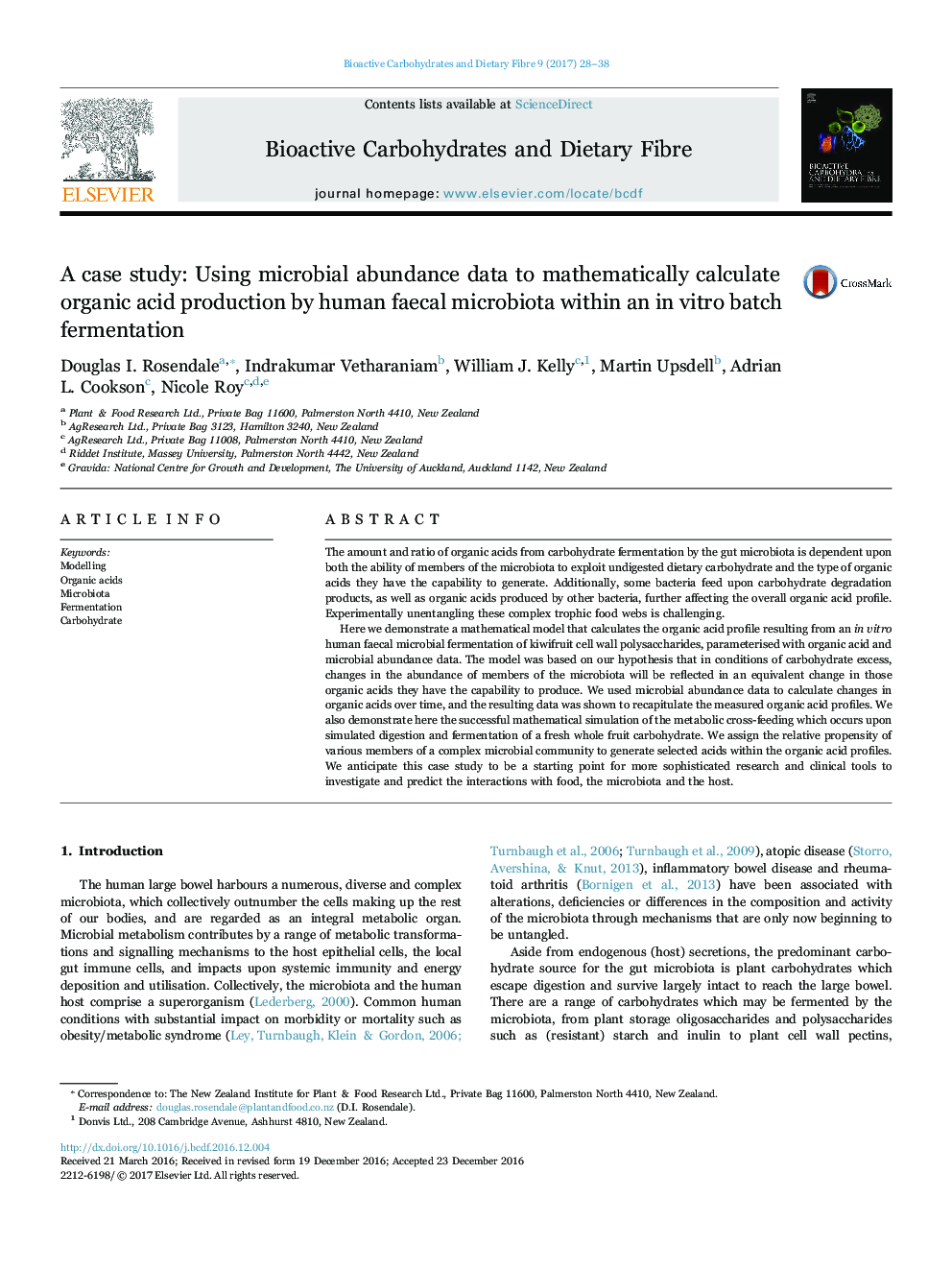| کد مقاله | کد نشریه | سال انتشار | مقاله انگلیسی | نسخه تمام متن |
|---|---|---|---|---|
| 5431412 | 1508791 | 2017 | 11 صفحه PDF | دانلود رایگان |
- Organic acids are produced from fermentation of carbohydrates by the gut microbiota
- Organic acid production can be calculated using microbial abundance data
- Mathematically simulating microbial crossfeeding upon organic acids is possible
- The propensity of microbiota members to produce acids in mixed culture was modelled
The amount and ratio of organic acids from carbohydrate fermentation by the gut microbiota is dependent upon both the ability of members of the microbiota to exploit undigested dietary carbohydrate and the type of organic acids they have the capability to generate. Additionally, some bacteria feed upon carbohydrate degradation products, as well as organic acids produced by other bacteria, further affecting the overall organic acid profile. Experimentally unentangling these complex trophic food webs is challenging.Here we demonstrate a mathematical model that calculates the organic acid profile resulting from an in vitro human faecal microbial fermentation of kiwifruit cell wall polysaccharides, parameterised with organic acid and microbial abundance data. The model was based on our hypothesis that in conditions of carbohydrate excess, changes in the abundance of members of the microbiota will be reflected in an equivalent change in those organic acids they have the capability to produce. We used microbial abundance data to calculate changes in organic acids over time, and the resulting data was shown to recapitulate the measured organic acid profiles. We also demonstrate here the successful mathematical simulation of the metabolic cross-feeding which occurs upon simulated digestion and fermentation of a fresh whole fruit carbohydrate. We assign the relative propensity of various members of a complex microbial community to generate selected acids within the organic acid profiles. We anticipate this case study to be a starting point for more sophisticated research and clinical tools to investigate and predict the interactions with food, the microbiota and the host.
218
Journal: Bioactive Carbohydrates and Dietary Fibre - Volume 9, January 2017, Pages 28-38
